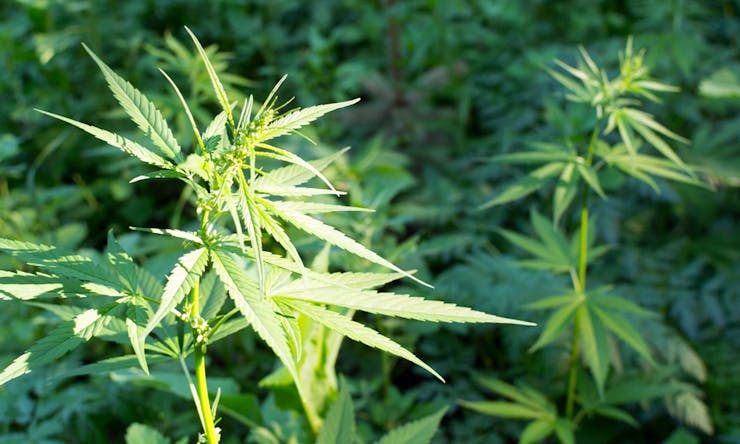Hemp is one of the oldest domesticated crops known to man. It has been used for paper, textiles, and cordage for thousands of years. In fact, the Columbia History of the World states that the oldest relic of human industry is a scrap of hemp fabric dating back to approximately 8,000 BC.
So what exactly is hemp, and how is it different from the intoxicating forms of cannabis that we consume medicinally and recreationally? Let’s dive into some Hemp 101 so you can better understand this versatile material.
What Is Hemp?

There are many different varieties of the cannabis plant. Hemp—also called industrial hemp—refers to the non-intoxicating (less than 0.3% THC) varieties of Cannabis sativa L. Both hemp and marijuana come from the same cannabis species, but are genetically distinct and are further distinguished by use, chemical makeup, and cultivation methods.
What Can Hemp Do?

Hemp can be grown as a renewable source for raw materials that can be incorporated into thousands of products. Its seeds and flowers are used in health foods, organic body care, and other nutraceuticals.

The fibers and stalks are used in hemp clothing, construction materials, paper, biofuel, plastic composites, and more.

Last year, the Hemp Industries Association (HIA) estimated the total retail value of all hemp products sold in the U.S. at $620 million. Sadly, all of the raw hemp materials were imported from other countries. (More on that later.) Hemp is an attractive rotation crop for farmers. As it grows, hemp breathes in CO2, detoxifies the soil, and prevents soil erosion. What’s left after harvest breaks down into the soil, providing valuable nutrients.
Hemp requires much less water to grow — and no pesticides — so it is much more environmentally friendly than traditional crops.
Shop highly rated dispensaries near you
Showing you dispensaries nearWhat Can’t Hemp Do?

(Photo by Bailey Rahn)
Hemp can do a lot, but it can’t get you “high.” Because hemp varieties contain virtually zero tetrahydrocannabinol (THC), your body processes it faster than you can smoke it. Trying to use hemp to put you on cloud nine will only put you in bed with a migraine!
Why Is Hemp Illegal?

In 1937, the Marijuana Tax Act strictly regulated the cultivation and sale of all cannabis varieties. The Controlled Substances Act of 1970 classified all forms of cannabis — including hemp — as a Schedule I drug, making it illegal to grow it in the United States (which is why we’re forced to import hemp from other countries as long as it contains scant levels of THC — 0.3% is the regulation for hemp cultivation in the European Union and Canada). As a result of this long-term prohibition, most people have forgotten the industrial uses of the plant and continue to misidentify hemp with its cannabis cousin, marijuana.
Can Hemp Make a Comeback?

The 2014 US Farm Bill allows states that have passed their own industrial hemp legislation to grow industrial hemp for purposes of research and development. Several states — including Kentucky, Colorado, and Oregon — are already conducting hemp pilot projects. Many other states are currently pursuing similar legislation and programs. After many years of prohibition, American farmers are finally reacquainting themselves with industrial hemp.
In January of 2015, The Industrial Hemp Farming Act (H.R. 525 and S. 134) was introduced in the House and Senate. If passed, it would remove all federal restrictions on the cultivation of industrial hemp, and remove its classification as a Schedule I controlled substance.
If the unwarranted federal prohibition of hemp is finally repealed, the world’s oldest domesticated crop will once again be available to serve mankind in a broad range of environmentally friendly ways. We love hemp, and hope that you will too. Look for a continuation of our series of hemp articles here on Leafly!
Learn more about Kentucky Hempsters and industrial hemp at kyhempsters.com, or check them out on the following social media platforms:





